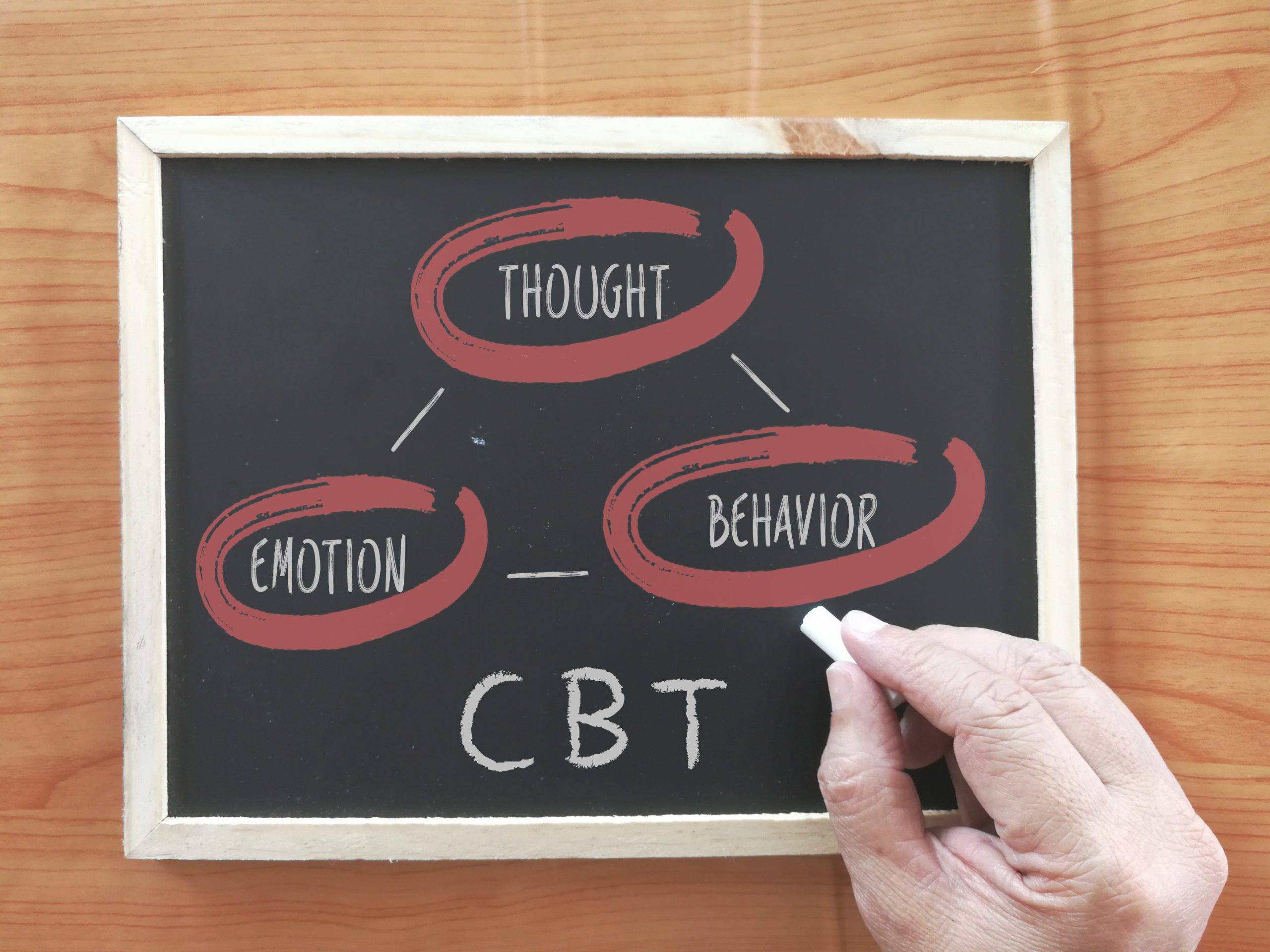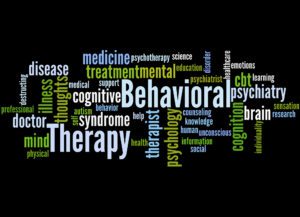 In the United States in 2018, around 20.3 million people over the age of 12 were struggling with addiction. Of those, 14.8 million had an alcohol use disorder, while 8.1 million were diagnosed with an illicit drug use disorder. NIDA, the American Society of Addiction Medicine, the American Medical Association and the National Institute on Drug Abuse all consider addiction a chronic disease. Despite the certainty among the majority of the medical community, there is a pervasive stigma attached to addiction, and the misconception of substance abuse as a choice persists.
In the United States in 2018, around 20.3 million people over the age of 12 were struggling with addiction. Of those, 14.8 million had an alcohol use disorder, while 8.1 million were diagnosed with an illicit drug use disorder. NIDA, the American Society of Addiction Medicine, the American Medical Association and the National Institute on Drug Abuse all consider addiction a chronic disease. Despite the certainty among the majority of the medical community, there is a pervasive stigma attached to addiction, and the misconception of substance abuse as a choice persists.
In this blog post, we’ll explore the arguments for and against the disease model of addiction. Ultimately, addiction treatment should be the primary goal of anyone worried about their relationship with drugs or alcohol. Learning about the condition is an excellent first step on the road to recovery. Call Valley Recovery Center today at 866-986-2486 to find out how to take the next step.
How Is Addiction Diagnosed?
Drug addiction is diagnosed using the Diagnostic and Statistical Manual of Mental Disorders, 5th Edition. This tool is the most up-to-date index of mental health disorders. Medical professionals use it to diagnose conditions such as autism, ADHD, schizophrenia and eating disorders. To get a diagnosis according to the DSM5, you need to meet just three of the following 11 criteria. A severe substance use disorder — or addiction — is considered when someone meets six or more.
- Uncontrollable cravings
- Narrowing of interests
- Psychological or physical problems related to substance use
- Dedicating a majority of time to alcohol or drug use
- Repeated failed attempts to stop or slow down
- Using more for more extended periods
- Tolerance
- Withdrawal
- Social problems as a result of substance use
- Failure to meet responsibilities at work, school or home
- Putting yourself in danger as a result of alcohol or drug use
Addiction’s inclusion within this manual is further evidence of the medical community’s view that condition is beyond the sufferer’s control. There is no stigma attached to type 2 diabetes or heart disease, even though it could be argued that a lack of willpower in the past might be a contributing factor in their development.
Just like substance use disorders, research shows that an unhealthy lifestyle can combine with genetic and environmental markers to trigger heart disease or type 2 diabetes. However, unlike addiction, this doesn’t make them diseases of choice in the eyes of the public. Self-blame often leads to guilt, which makes recovery much harder. Sympathy, understanding and support are the best methods of helping someone overcome addiction — not judgment or punishment.
What Causes Drug Addiction?
There are a multitude of factors that lead up to someone developing a substance use disorder. To make matters even more complicated, there is no single gene or life event that causes addiction. It happens for slightly different reasons for each person. Plus, everyone has a different baseline threshold when it comes to resilience and self-control.
Although you can learn these skills, a deficiency of either can significantly increase your risk of falling victim to addiction. The absence of them is again the result of a complex mixture of the following factors:
Genetic Factors
There is no doubt that genetics plays a vital role in the onset of addiction, but there is no single gene that scientists have isolated that causes it. Instead, there are several genes, some of which might lie dormant for years until a social or environmental trigger activates them.
In some cases, it’s the genetic propensity towards certain personality traits that make falling prey to a substance use disorder more likely. For example, evidence suggests that genetics decides whether someone is impulsive or ultra-sensitive to stimuli. If someone is more inclined towards either trait, they’re more likely to take part in sensation-seeking behavior and seek solace in substances.
Environmental Factors
Environmental risk factors are also highly relevant when it comes to addiction. If someone grows up in a household where substance abuse is normalized, they’re more likely to abuse drugs or alcohol. Education and family values also contribute to an individual’s propensity for addiction. If someone learns self-regulation from their family, their prefrontal cortex will develop faster than someone who doesn’t learn and practice self-control from a young age.
The prefrontal cortex is the part of the brain that’s responsible for logic, resilience and decision-making. It can override the more primal, emotionally driven parts of the brain that encourage sensation-seeking. When these emotional parts of the brain are in charge, you’re inclined towards behaviors that have short-term benefits but cause long-term problems.
The great news is that anyone can practice self-regulation, and the more you get into that habit, the easier it is to break harmful habits. Addiction recovery is about breaking unhelpful patterns and replacing them with desirable ones.
Of course, if you’ve experienced trauma in your life, this is more challenging — but it is still possible. Even if you’ve been diagnosed with a mental illness, you can learn to control your symptoms without turning to substances.
Is Addiction a Disease?
With all the information above, it seems pretty apparent that addiction is a disease. The idea of it as a choice stems from the fact there are an initial series of decisions that lead to a severe, compulsive severe substance use disorder. However, the reasons behind those choices are usually beyond the level of self-control that the individual is able to exercise at the time.
Often, people can’t comprehend the future consequences because their sole focus is on self-soothing in the present. To heal from addiction, you’ll need therapy to learn how to cope with stressful emotions and learn about what motivates you and what triggers you.
 Some experts say addiction is a gradual narrowing of interests until only the substance of choice remains. When addiction is at this stage, your brain changes because the dopamine reward system has been hijacked. This essentially means your mind perceives substances as the only means of getting pleasure and feeling good.
Some experts say addiction is a gradual narrowing of interests until only the substance of choice remains. When addiction is at this stage, your brain changes because the dopamine reward system has been hijacked. This essentially means your mind perceives substances as the only means of getting pleasure and feeling good.
While a change in brain chemistry is the defining feature of substance use disorders, in most cases it’s not permanent, and therapy, support and medical intervention can help you make the necessary changes.
Who Invented the Disease Model of Addiction?
NIDA cites McLellan et al.’s paper in 2000 as one of the defining documents that makes the clearest case for the disease model of addiction. It notes the affinities between substance use disorders and other chronic illnesses. The main similarities it points to include:
- There are more genetic contributors to addiction than heart disease.
- Environmental factors, including lifestyle choices, contribute to addiction, just like heart disease.
- Stress is a major contributing factor to addiction and chronic diseases like cardiovascular disease.
- Drug use damages the brain just as heart disease damages the heart.
- Relapse rates are similar in drug addiction, type 2 diabetes, hypotension and asthma.
The bottom line is that no one chooses to become addicted to drugs or alcohol, just as no one chooses to get heart disease. Just because lifestyle plays a role in both, it doesn’t mean the individuals who develop them were necessarily informed or stable enough to prevent the onset.
Gene Heyman’s Choice Model
In 2009, Gene Heyman released a book called Addiction: A Disorder of Choice. He argues that the disease model is inaccurate and misleading. While he doesn’t believe that people who struggle with addiction have chosen to become an addict, he believes that it occurs as a result of disordered decision-making.
This view doesn’t take into account the debilitating impact drugs and alcohol can have on the nervous system. People who fall into addiction often have imbalanced neurotransmitters, which are worsened by substance use. If it was a simple matter of cognitive choices, many more people would surely develop the condition. Furthermore, the idea of addiction as a choice diminishes the impact trauma and stress have on our bodies and minds.
What Are the Most Addictive Drugs?
All psychoactive drugs have the potential to be addictive because they alter a person’s conscious experience of the world. Whether they numb pain, dull the senses or boost confidence and concentration, pretty much every substance user has a reason for taking them. The following drugs have the highest rates of abuse and addiction:
Opioids
The most addictive substances are without a doubt opiates. These medications are used medically to treat extreme, chronic pain. They work by attaching to opioid receptors in the brain and body, which causes a huge rush of dopamine and endorphins. For someone who is struggling with physical or emotional pain, the relief this causes is often unlike anything the user has experienced before.
However, within two or three consecutive days of using these substances, your body starts to adapt. Because they attach to internal receptors so effectively, you physically start to feel a need for them. Your body fights this by adapting more, which is felt as tolerance. When tolerance starts to develop, you need more to get the same hit. When you take higher doses, your body becomes increasingly dependent, which feeds the cycle of addiction.
The strength of these substances makes it a huge challenge to overcome opioid use disorder, but it’s still possible. The horrific effects of heroin and opiate painkillers are so widely known that most people who take that route in their lives are experiencing unimaginable pain. The suggestion that there is an element of choice in such a debilitating illness lacks empathy and understanding.
Alcohol
Even though alcohol is entirely legal and the majority of people can drink it without a problem, it kills 3 million people each year. It takes effect on the central nervous system as a depressant. This means it causes a surge of neurotransmitters that make you feel relaxed, uninhibited and eventually sleepy. Just like opioids, over time, your body starts to rely on the alcohol to trigger these neurotransmitters instead of releasing them naturally.
Sedative Hypnotics
Sedative hypnotics like benzos work almost identically to alcohol. They cause the release of a vital neurotransmitter called GABA, which is responsible for regulating anxiety and inducing sleep. Lots of people take these drugs to relieve the symptoms of anxiety. However, over time, your brain starts to rely on them. The result is feelings of extreme, often worsened anxiety unless you’re taking the medication.
The reasons why not everyone who has a difficult childhood turns to drugs are highly nuanced, just as there are complex factors leading someone who has seemingly never experienced trauma to turn to substance abuse. Some people can experiment with taking drugs recreationally, and others find any kind of inebriation totally unpleasant. We’re still learning exactly how and why people get addicted — but most experts agree that choice is not the cause.
How to Get Help for Drug or Alcohol Addiction
While addiction might appear to be a simple cognitive choice on the surface, it’s clearly more complex when you delve deeper. Most people who experience substance use disorders find it difficult to focus on or plan for the future. As previously mentioned, this is due to a mixture of genetic and environmental factors, but in most cases, it compels them to seek short-term fixes.
Self-control and resilience are skills, and just like any other skill, they can be learned. Anyone who’s struggling with addiction must understand that although it takes a lot of hard work and a genuine desire to gain control over your symptoms, it is possible for everyone.
Recovery Is a Choice
One thing is sure when it comes to drug and alcohol addiction: Recovery is a choice. It’s not an easy one to make, but when you do, it’ll be life-changing and self-esteem-boosting. Call Valley Recovery Center today at 866-986-2486 to book a consultation.









 According to the National Survey of Drug Use and Health, almost
According to the National Survey of Drug Use and Health, almost 
 In the United States in 2018, around 20.3 million people over the age of 12 were
In the United States in 2018, around 20.3 million people over the age of 12 were  Some experts say addiction is a gradual narrowing of interests until only the substance of choice remains. When addiction is at this stage, your brain changes because the dopamine reward system has been hijacked. This essentially means your mind perceives substances as the only means of getting pleasure and feeling good.
Some experts say addiction is a gradual narrowing of interests until only the substance of choice remains. When addiction is at this stage, your brain changes because the dopamine reward system has been hijacked. This essentially means your mind perceives substances as the only means of getting pleasure and feeling good.
 The 12-step philosophy was written almost a century ago, and yet it remains the
The 12-step philosophy was written almost a century ago, and yet it remains the 
 The benefits of trauma therapy for addiction are multiple. During childhood, while your brain is developing, trauma can lead to internalized negative self-beliefs. On an intellectual level, you might have processed these events — but that doesn’t mean the underlying belief isn’t wreaking havoc in your life. Lots of people who
The benefits of trauma therapy for addiction are multiple. During childhood, while your brain is developing, trauma can lead to internalized negative self-beliefs. On an intellectual level, you might have processed these events — but that doesn’t mean the underlying belief isn’t wreaking havoc in your life. Lots of people who 
 People sometimes use the terms inpatient and residential rehab interchangeably — however, the two forms of addiction treatment are quite distinct. Inpatient treatment describes voluntary or involuntary hospitalization for an acute substance use disorder. Residential rehab is a more intimate and specialized environment where you get access to the latest therapy and resources.
People sometimes use the terms inpatient and residential rehab interchangeably — however, the two forms of addiction treatment are quite distinct. Inpatient treatment describes voluntary or involuntary hospitalization for an acute substance use disorder. Residential rehab is a more intimate and specialized environment where you get access to the latest therapy and resources. When it comes to inpatient rehab, you’re likely to be in a hospital with the usual amount of staff they have. Depending on where you live, this could mean being in an understaffed ward with caregivers whose specialization isn’t the field of addiction. In a luxury residential rehab, space is usually limited to six or fewer clients.
When it comes to inpatient rehab, you’re likely to be in a hospital with the usual amount of staff they have. Depending on where you live, this could mean being in an understaffed ward with caregivers whose specialization isn’t the field of addiction. In a luxury residential rehab, space is usually limited to six or fewer clients. One of the most appealing aspects of residential rehab compared to inpatient rehab is the type of place you get to stay in. Hospitals are practical places that need to take into account the needs of a wide range of different patients.
One of the most appealing aspects of residential rehab compared to inpatient rehab is the type of place you get to stay in. Hospitals are practical places that need to take into account the needs of a wide range of different patients.